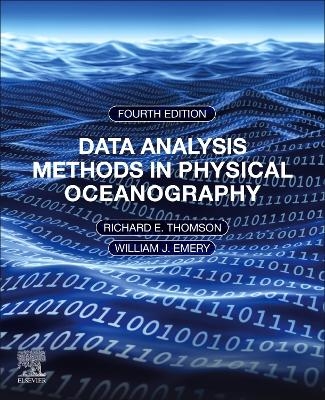
Data Analysis Methods in Physical Oceanography
Elsevier Science Publishing Co Inc (Verlag)
978-0-323-91723-0 (ISBN)
This book brings together relevant techniques and references recent papers where these techniques have been trialed. In addition, it presents valuable examples using physical oceanography data. For students, the sections on data acquisition are useful for a compilation of all the measurement methods.
Richard E. Thomson is a researcher in coastal and deep-sea physical oceanography within the Ocean Sciences Division. Coastal oceanographic processes on the continental shelf and slope including coastally trapped waves, upwelling and baroclinic instability; hydrothermal venting and the physics of buoyant plumes; linkage between circulation and zooplankton biomass aggregations at hydrothermal venting sites; analysis and modelling of landslide generated tsunamis; paleoclimate using tree ring records and sediment cores from coastal inlets and basins. William (Bill) Emery worked as a professor in Aerospace Engineering Sciences at the University of Colorado from 1987, prior to which he worked in the University of British Columbia where he created a Satellite Oceanography education/research program. He has authored over 220-refereed publications and 4 textbooks in addition to having given 200 conference papers. He is a fellow of: the IEEE (2002), the American Meteorological Society (2010), the American Astronautical Society (2011) and the American Geophysical Union (2012). He was recently elected to the IEEE TAB Hall of Honor (2020). In 2022 he received the GRSS Fawaz Ulaby Distinguised Achievement Award.
1. Data Acquisition and Recording
2. Data Processing and Presentation
3. Statistical Methods and Error Handling
4. The Spatial Analyses of Data Fields
5. Time-series Analysis Methods
6. Digital Filters
7. Machine Learning Methods
8. Neural networks, convolutional neural networks and deep learning
| Erscheinungsdatum | 20.08.2024 |
|---|---|
| Sprache | englisch |
| Maße | 216 x 276 mm |
| Gewicht | 2430 g |
| Themenwelt | Naturwissenschaften ► Biologie ► Ökologie / Naturschutz |
| Naturwissenschaften ► Biologie ► Zoologie | |
| Naturwissenschaften ► Geowissenschaften ► Hydrologie / Ozeanografie | |
| Technik ► Umwelttechnik / Biotechnologie | |
| ISBN-10 | 0-323-91723-2 / 0323917232 |
| ISBN-13 | 978-0-323-91723-0 / 9780323917230 |
| Zustand | Neuware |
| Informationen gemäß Produktsicherheitsverordnung (GPSR) | |
| Haben Sie eine Frage zum Produkt? |
aus dem Bereich


